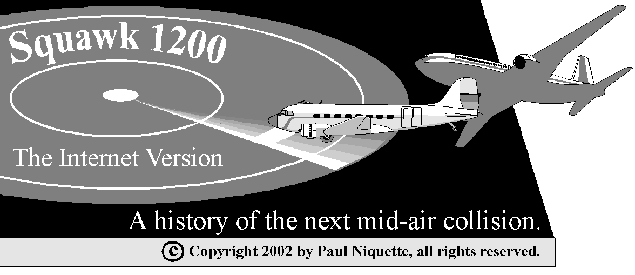

|
Introduction In 1959, I had the honor to work on a team of contractors acting as consultants to the newly-formed FAA. As reported in this memoir, from the beginning, our efforts focussed on the most urgent needs of air traffic controllers...
Much is left to be done. First, an easy one: there still exists no reliable "uplink" by which air traffic controllers can communicate automatically with the pilot of an airliner or a private plane either for routine or emergency instructions. Let's fix that. As the wags among us predicted, vehicles on the ground -- even pedestrians -- actually do enjoy the benefits of what's called "cellular telephony," which automates the connectivity protocol. Airplanes don't even have the equivalent of a phone number. Pilots still talk "half-duplex" on party lines -- the same as truckers over their CB radios. A plumber's pocket pager applies more sophisticated technology than the most advanced avionics to be found in airliners. Aviation's priorities are scrambled. Each airliner is now equipped with a so-called "collision avoidance system," which gives frantic, last-second commands to flight crews when a close encounter of the worst kind has been detected. Fine. However, wishful thinking has no place in public safety. Airline passengers should not be fooled into a false sense of security by the word "avoidance." "Collision evasion system" may be more appropriate, as I have written elsewhere. In an orderly environment characterized by state-of-the-art ground-based automation -- a true collision "avoidance" system with sophisticated software that flows airplanes along their chosen routes at optimal speeds and altitudes for fuel efficiency and unspilled drinks in the cabin, always safely unconflicted with other aircraft -- that kind of system is still a distant dream. The title of this memoir calls attention to the disgraceful fact that the majority of aircraft in the sky at any given time all share the same squawk code, 1200. The previous sentence deserves an exclamation point and so does the next one. That's right, "general aviation" aircraft flying under VFR do not routinely receive assignments of discrete transponder codes. Disgraceful, perhaps, but why important? According to aviation statistics available from the FAA, over the dozen years prior to this writing (2002), there have been a total of 42 fatal midair collisions in the U.S. None have involved airliners. "Whew!" exclaims the reader who never flies in private aircraft. Over that same period of time, however, The FAA's database has recorded hundreds of near midair collisions (NMACs). Many thousands of NMACs go unreported, according to some estimates. Moreover, 100% of the NMACs that take place in clouds never get documented! Presumably the most credible reports on NMACs are those that have been filed by airline flight crews. Over the past 12 years, 80 have been analyzed by the FAA and officially classified as "critical" -- requiring evasive action. About one in three (24) were NMACs between two airliners or between an airliner and an air-taxi operator. More than half (49) were between an airliner and a general aviation aircraft. Important? Nota bene: All tragic midair collisions in history were unreported NMACs. Midair collisions are inexcusable. I would not say that about other causes for disaster aloft -- weather hazards, equipment failures, pilot errors. Squawk 1200 deals with that one aspect of aviation safety. By catching up with the technologies of our time the U.S. can change the statement to read, "midair collisions are history." That's what I think, anyway. After considering what I have to say here about that subject, please tell me what you think. |
| Home Page | Table of Contents | Chapter 1 | Contact Author |